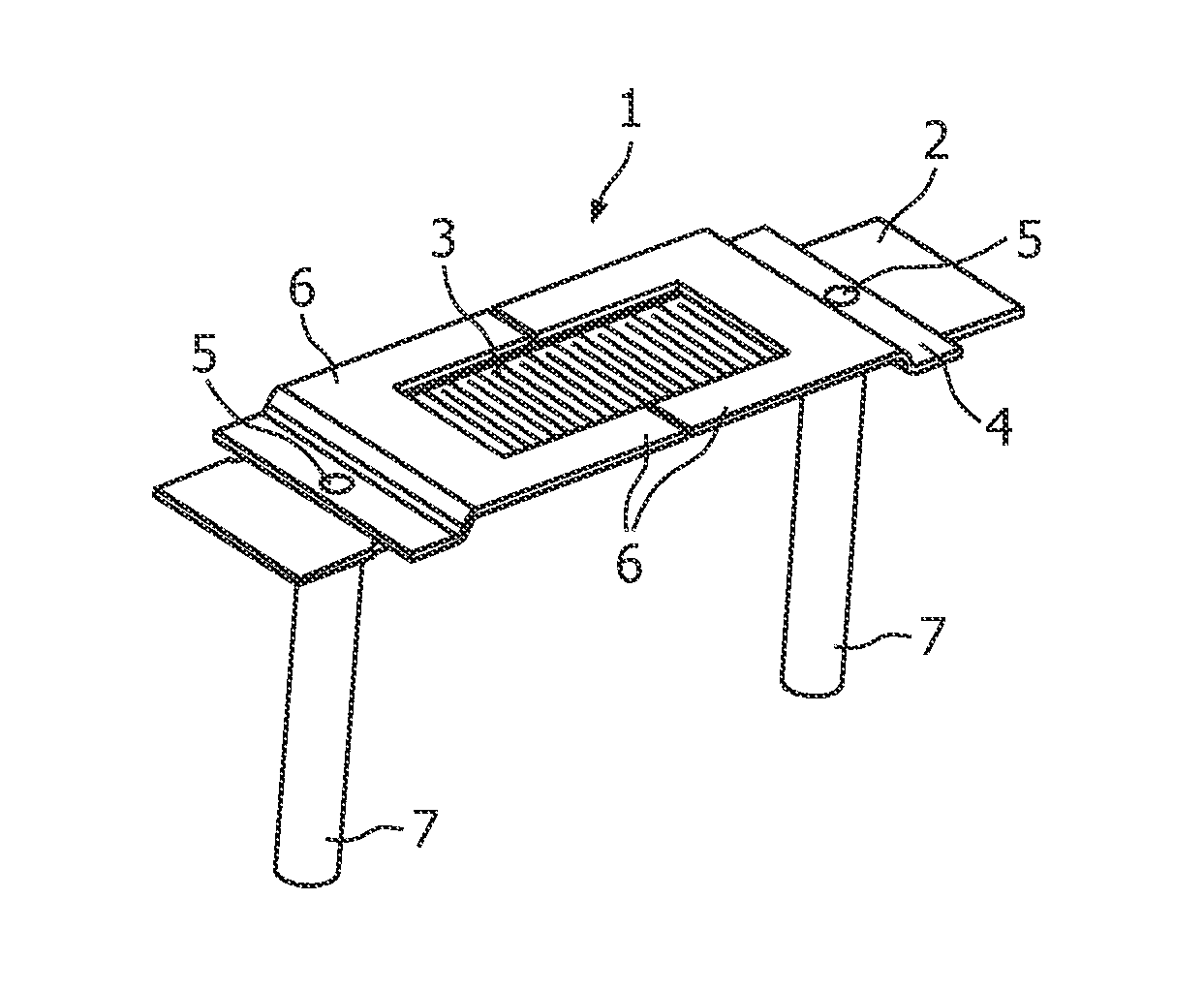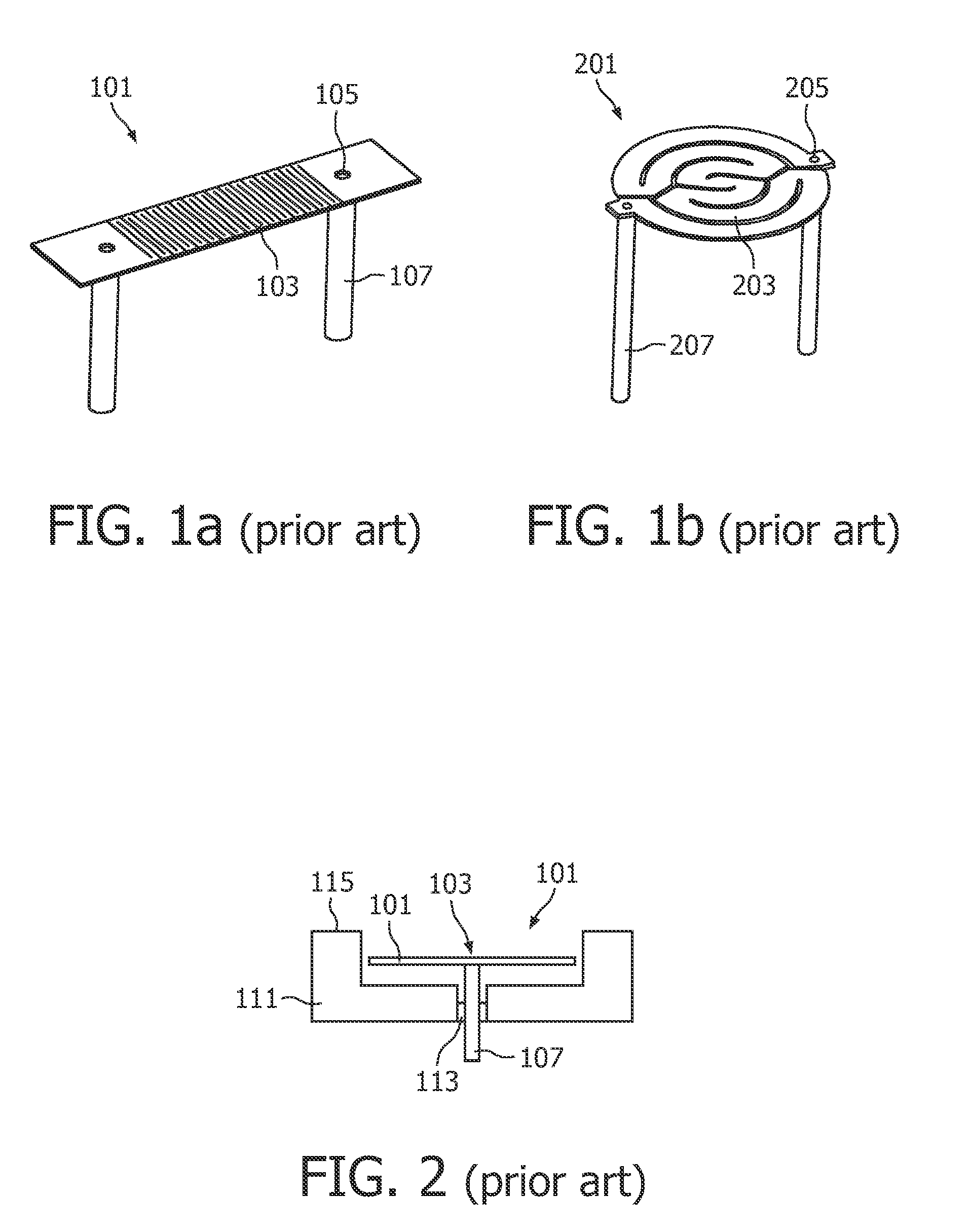Thermionic electron emitter and X-ray source including same
a technology of electron emitter and x-ray source, which is applied in the direction of discharge tube/lamp details, x-ray tube main electrode, discharge tube/lamp details, etc., can solve the problems of significant negative change in the intensity distribution and optical quality of the focal spot system, and inability to stabilize the mechanical connection between the external segments, etc., to achieve minimal focal spot size, minimal response time, and superior properties
- Summary
- Abstract
- Description
- Claims
- Application Information
AI Technical Summary
Benefits of technology
Problems solved by technology
Method used
Image
Examples
Embodiment Construction
[0051]FIG. 6 shows a top view of a thermionic electron emitter 1 according to a first embodiment of the invention. The electron emitter 1 comprises an inner part 2 and an outer part 4 substantially enclosing the inner part 2. On the inner part 2, connection points 5 are provided which are to be connected with terminals for applying an external voltage to a region between lateral extremities of the inner part, this intermediate region serving as heatable flat emission surface 3.
[0052]In the drawing, the emission surface 3 is shown with different hatchings wherein a dense hatching indicates a higher temperature during operation when a current is flowing through the emission surface whereas a less dense hatching indicates a lower temperature during operation. It can be seen that at the centre between the two connection points 5 there is the highest temperature whereas in the border regions the temperature remains lower.
[0053]Accordingly, the terminals connected to the connection points...
PUM
 Login to View More
Login to View More Abstract
Description
Claims
Application Information
 Login to View More
Login to View More - R&D
- Intellectual Property
- Life Sciences
- Materials
- Tech Scout
- Unparalleled Data Quality
- Higher Quality Content
- 60% Fewer Hallucinations
Browse by: Latest US Patents, China's latest patents, Technical Efficacy Thesaurus, Application Domain, Technology Topic, Popular Technical Reports.
© 2025 PatSnap. All rights reserved.Legal|Privacy policy|Modern Slavery Act Transparency Statement|Sitemap|About US| Contact US: help@patsnap.com



